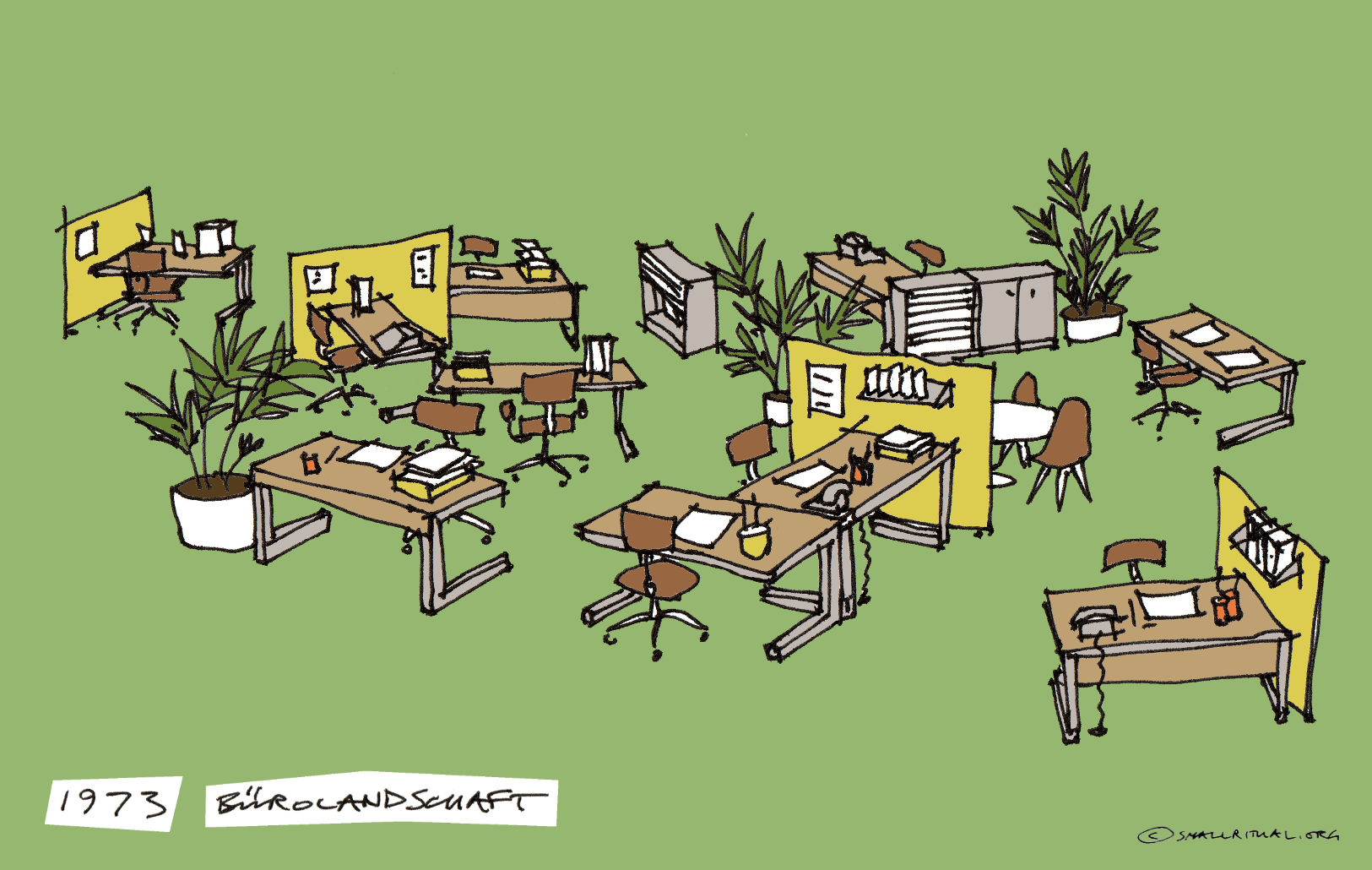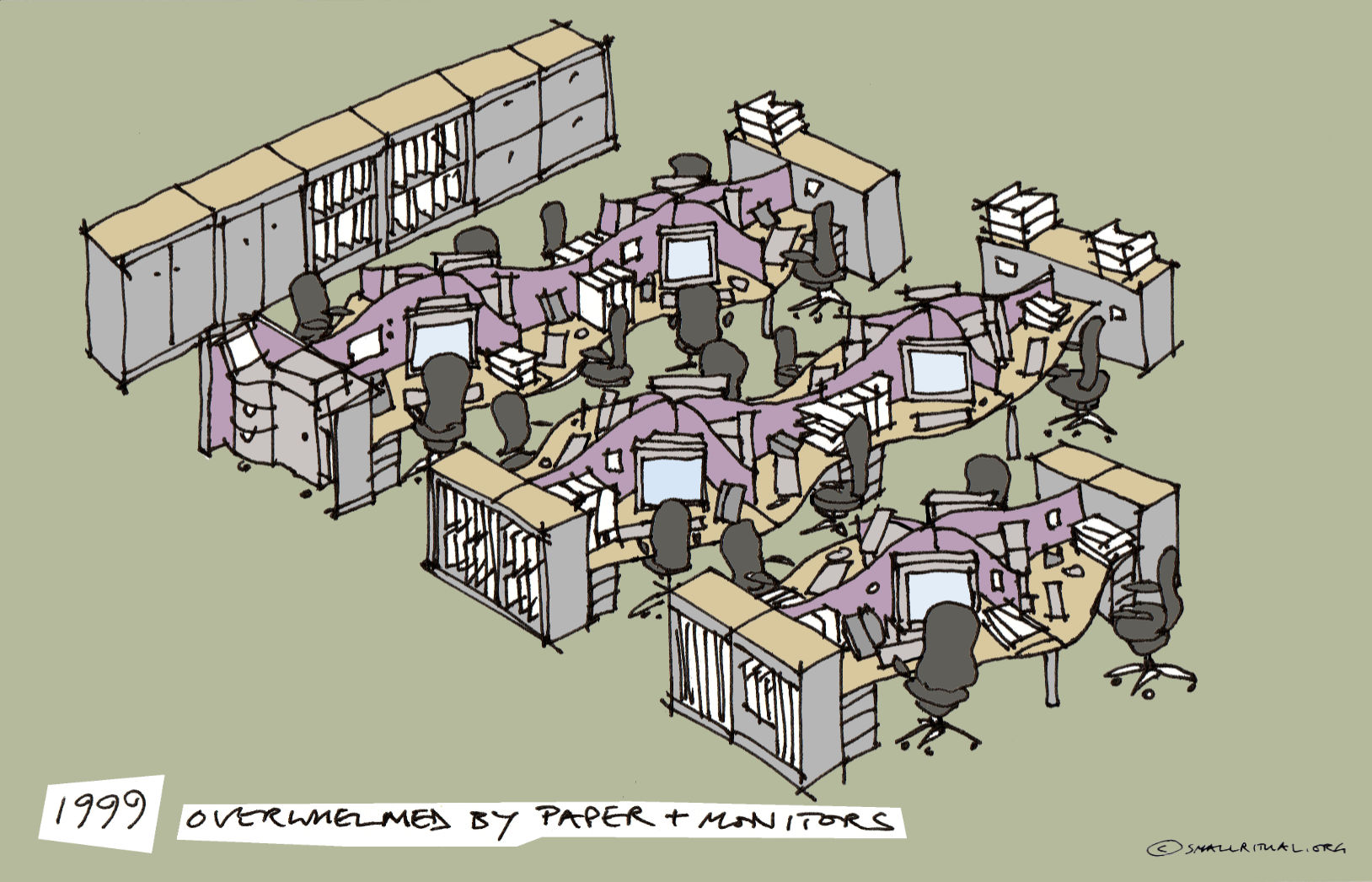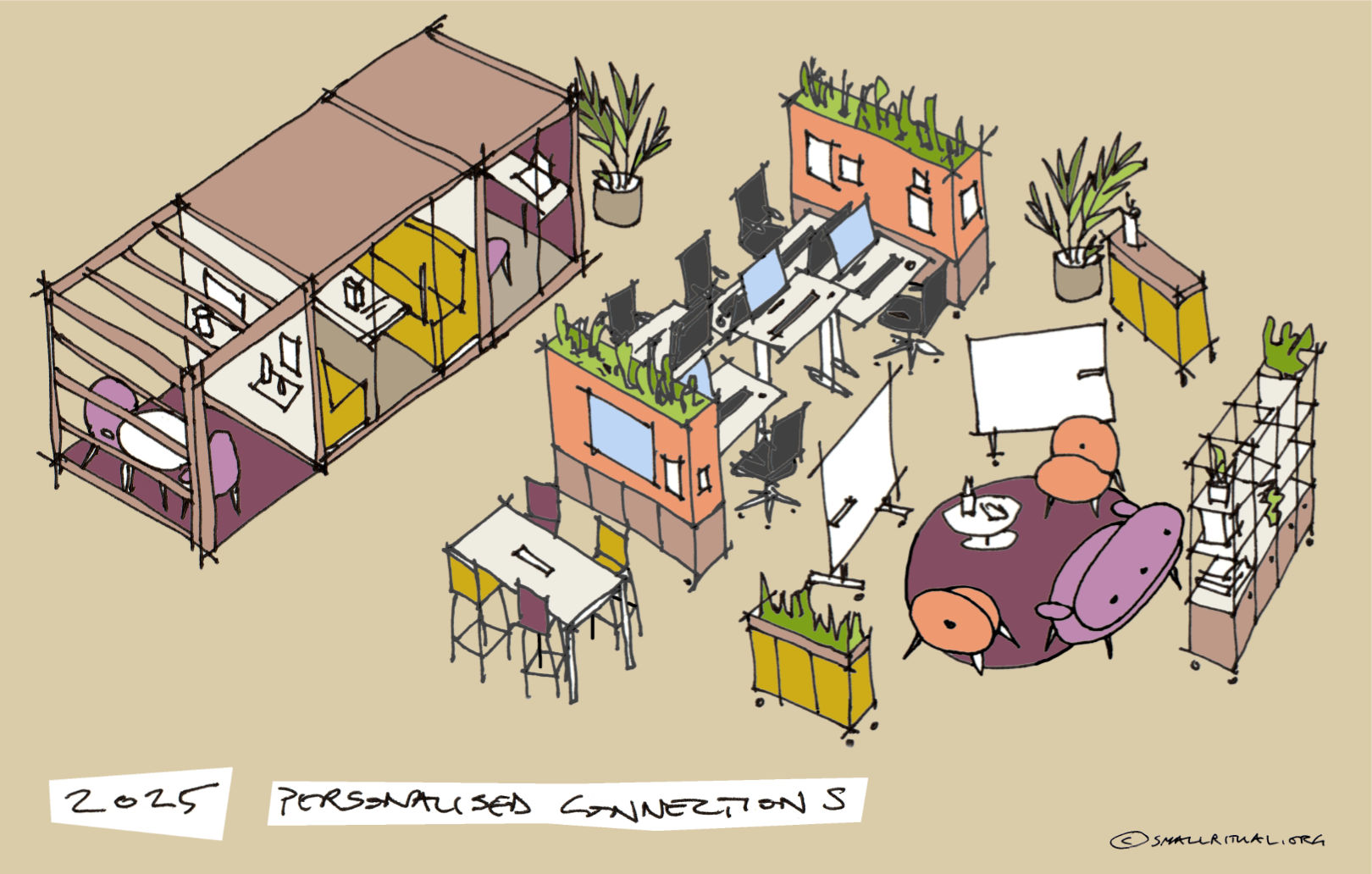Workplace evolution
From organisational layouts to technological layouts to social layouts
 |
 |
 |
 |
 |
Burolandschaft layouts are seemingly chaotic, determined by workgroup needs. Desks can be placed anyhow because only a few have equipment that needs to connect to a floor socket. |
Cable management is the major challenge for furniture systems in the 80s. Desks and screens connect together for cabling continuity with cable-routing legs. The raised access floor emerges as the standard solution for power and data supply. This ties desk layouts into rows aligned with the floor grid. |
By the turn of the century everything is covered with paperwork, because printing is easy and still required for filing. The rest of the space is filled by huge CRT monitors, CPU boxes, keyboards, mice on mats, landline handsets, rolodexes, desk diaries, post-its, penpots... |
By the 10s the monitors are flat, the CPUs are under the desks or even thin clients, the paper is just for compliance or convenience. Bench desks offer some flexibility, alternative work settings are appearing, but almost every work location still gets the full IT kit as few people have adequate devices. |
Technology is wireless, portable and personal, so desks as such are less needed. They are sit-stand and primarily to hold a big monitor for individual work. People move easily into different personal and group settings according to their tasks or feelings. |

